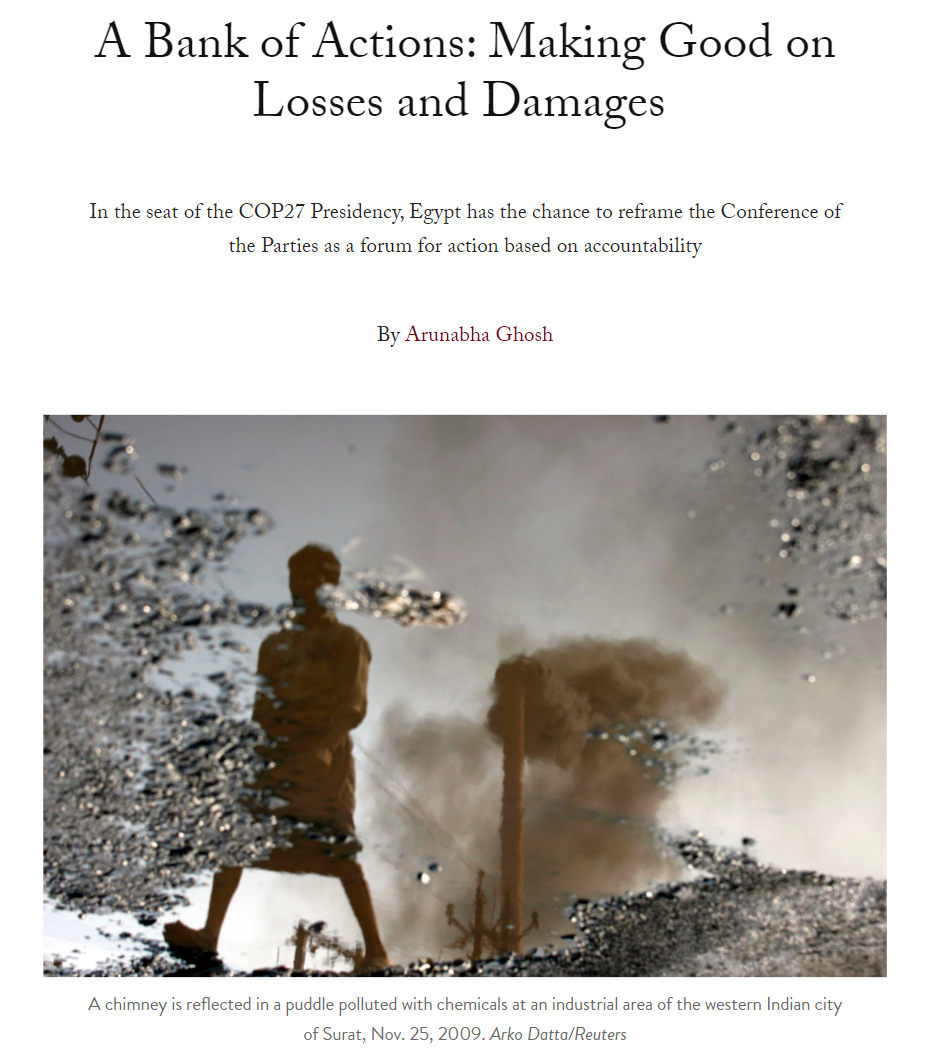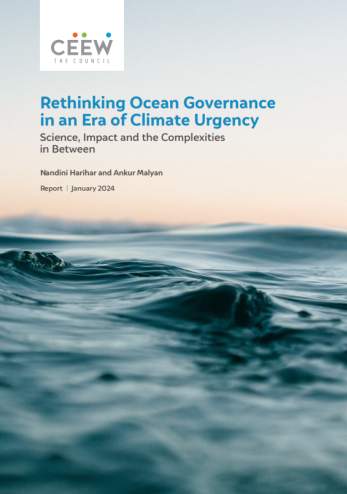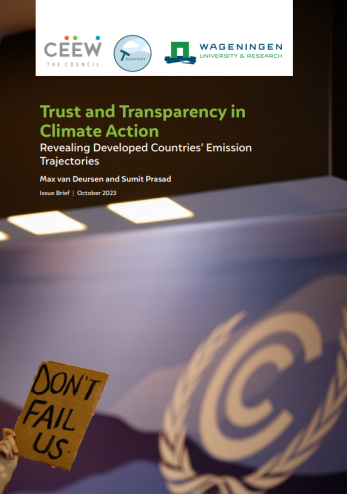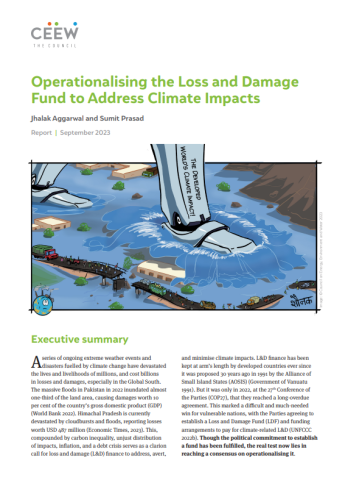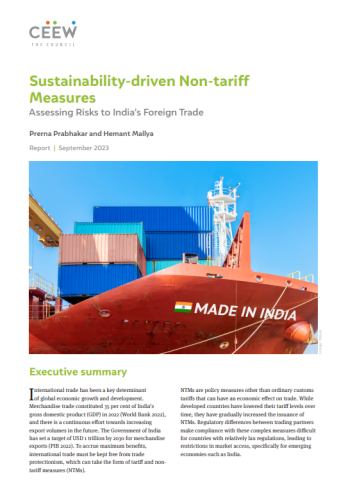Paper
A Bank of Actions: Making Good on Losses and Damages
Arunabha Ghosh
May 2023 | International Cooperation
Suggested citation: Ghosh, Arunabha. 2023. A Bank of Actions: Making Good on Losses and Damages. The Cairo Review of Global Affairs.
Overview
This article, published in The Cairo Review of Global Affairs' Spring 2023 edition, emphasises how Egypt’s COP Presidency–which will last till November 2023– can begin the transformation toward making UNFCCC a bank of just, credible, and accountable actions. It is time to orient the Conference of Parties away from conversation and commitments and toward action and accountability. The article gives key recommendations on how this can be done: prioritising loss and damage finance, promoting multilateralism, increasing transparency, and ensuring compliance.
Key Highlights
- The global climate regime is complex and multi-institutional. At its heart sits a bank called the UNFCCC. In effect, it has now become a vault for more and more valuable deposits, including commitments for net zero emissions. If the near-term returns remain poor, the long-term commitments will likewise become post-dated cheques on a failing bank. The first test of UNFCCC’s conversion into a bank of actions would be how the decision on loss and damage financing is implemented.
- Develop a Global Vulnerability Index to quantify vulnerability to the adverse effects of climate change. In 2021, the Council on Energy, Environment, and Water (CEEW) developed a Climate Vulnerability Index for India, which found that over 80 per cent of Indians are highly vulnerable to extreme climatic disasters. Such data help map critical vulnerabilities and plan strategies to build resilience by climate-proofing communities, economies, and infrastructure.
- Egypt’s COP presidency and India’s Group of Twenty (G20) presidency can collaborate on promoting multilateralism for chronic risks by proposing a Global Resilience Reserve Fund (GRRF) that goes beyond disaster relief. Capitalised by International Monetary Fund (IMF) Special Drawing Rights, or reserve assets maintained by the IMF to support its members, the GRRF could pool risks across vulnerable regions and leverage public funds to fix a market failure of lack of insurance coverage for much of the Global South.
- Another structural challenge the UNFCCC has faced is that some of the biggest polluters have bailed out on their commitments or even exited agreements with impunity. One way to minimize such instances is to enhance the scope of the Compliance Committee under Article 15 of the Paris Agreement. Further, increasing the integrity of commitments and credibility actions of corporations, cities, and regions could counteract non-performance by Parties.
- Ultimately, the COP process will draw legitimacy not only from how emissions were abated, but how energy was provided to billions of people who remain energy poor. In the developing world, distributed renewable energy (DRE) systems can provide energy access at far lower costs than extending existing grids.
"The success in negotiating an L&D financing facility is also an admission of the gravest failure of the COP process: accountability. Future COPs must focus almost exclusively on ensuring delivery and holding laggards accountable."




